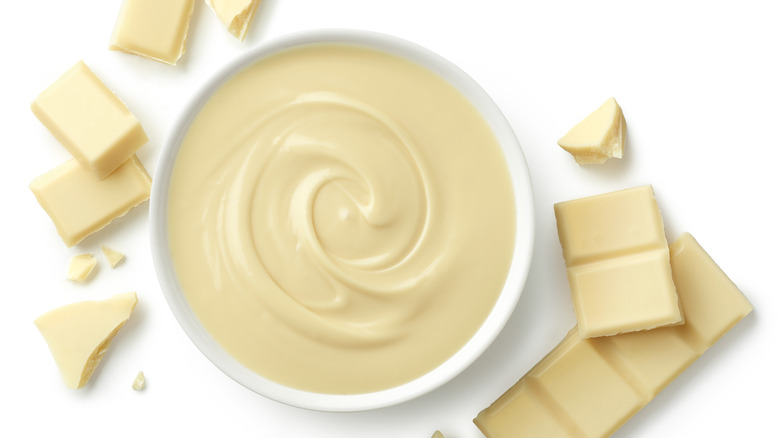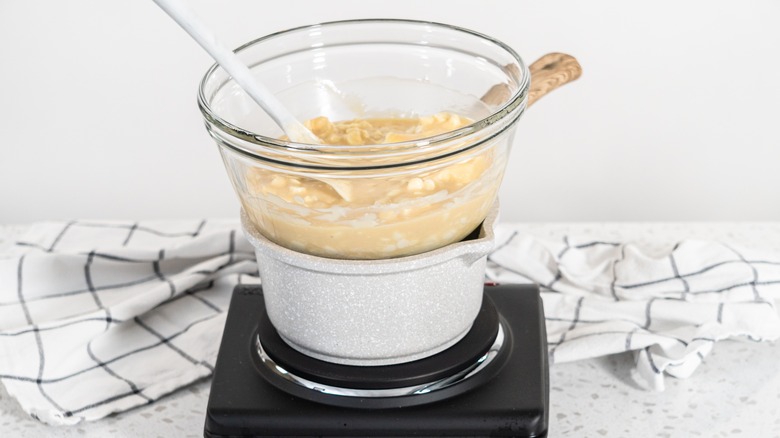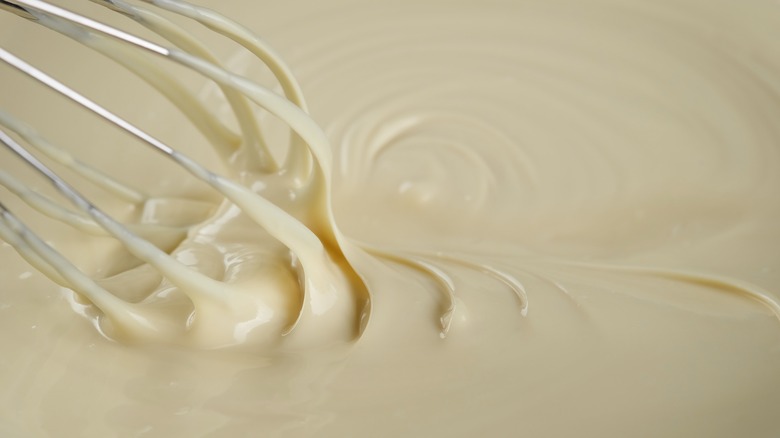Does White Chocolate Melt The Same As Other Varieties?
If you've ever tried and failed to melt white chocolate to drizzle over a delicious cake or in a hot chocolate recipe, you might've thought it was just a fluke — but white chocolate doesn't react in the same way to heat as other types of chocolate because it melts at a lower temperature. This is also why it's really easy to burn during the melting process.
So, what's the reason for the difference in how different chocolates handle heat? Well, it's all about the cocoa solids in the chocolate. White chocolate lacks the cocoa solids you'll find in dark and milk chocolate (which is also why some people wonder if white chocolate is actually even chocolate). Even though you can melt it like darker chocolate varieties, it does require a bit more TLC during the process — you've got to ensure you don't overheat it. As the Royal Society of Chemistry reports, dark chocolate with 85% cocoa solids starts melting at approximately 114.8 degrees Fahrenheit, milk chocolate with up to 50% cocoa solids melts at around 104 degrees Fahrenheit, and white chocolate without cocoa solids melts at 98.6 degrees Fahrenheit.
How to melt white chocolate
One of the best ways to melt white chocolate is by popping it into the microwave, but you have to be careful not to let it get too hot because, as we mentioned earlier, white chocolate is going to melt faster than other chocolate. So, put chopped white chocolate in a bowl in the microwave for 20-30 seconds at a time before taking it out and stirring it well to heat it without burning it. This will also help you keep an eye on the chocolate so you can see when it's all fully melted.
Another method to melt white chocolate successfully is the double broiler method. This perfectly melts chocolate without burning it. To utilize this method, you'll need a saucepan of simmering water with a bowl on top. After placing chunks of white chocolate in the uppermost bowl, you can heat up the saucepan and the steam from it will melt the chocolate.
What to do if white chocolate won't melt
As with any type of chocolate, melting white chocolate can backfire and cause a lumpy mess. What causes this phenomenon? Moisture! Water is chocolate's worst enemy because when it comes into contact with chocolate it causes it to become hard or coarse. This is known as "seizing." When you melt chocolate, you want to prevent moisture from getting anywhere near it, so there shouldn't be any moisture in your mixing bowl or on your baking utensils.
To rescue seized chocolate and make it smoother, you can add one teaspoon of coconut oil or boiling water to it and stir it well. If it's still thick or hard, add another teaspoon. You can continue doing this until the chocolate becomes creamy. Although it might sound strange to use liquid to make chocolate creamy when you should be avoiding moisture to begin with, adding liquid when chocolate seizes will help to break down the cocoa and sugar in it so that it can become smooth once again.
Now that you have all the choc facts, the next time you need to melt white chocolate make sure you keep an eye on its temperature to melt it like a pro.


